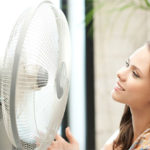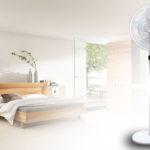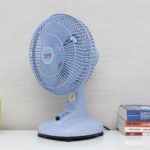Aside from air conditioning, a fan is a popular and essential cooling device that almost every household owns and uses one or more devices. Compared to air conditioning, fans have a lower purchase cost, lower operating costs, and are easier to equip and install.
However, not every user knows how to use a fan properly. One of the questions is: “Should I choose a higher or lower setting when turning on the fan? Which fan setting consumes more electricity?”.
This question has received a lot of attention from the majority of users. There are many opinions given to answer this question. Some people believe that turning on the fan at higher settings will consume more electricity because the device needs to operate at a higher power, thus consuming more energy. Others believe that, based on the operating principle of the device, turning on the fan at lower settings will consume more electricity because the resistance is higher.
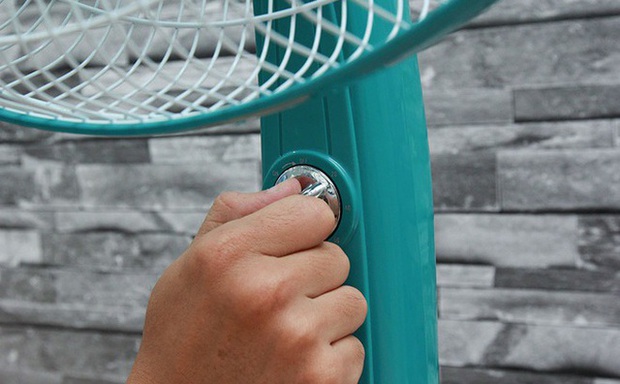
Illustrative image
So what is the real answer to this question?
User experiments
To clarify the answer to the question “Does turning on the fan at higher or lower settings consume more electricity?”, many users have conducted measurement experiments with specialized devices to obtain specific numbers. The user below is one of them.
The experiment was posted on a YouTube channel specializing in electronic innovations. In the video, the video owner turned on the fan at 2 different speeds and measured the power consumption.
When the fan is turned on at the highest setting, the recorded current is 0.17A, then gradually decreases and maintains a stable level of 0.13A. When the fan is turned on at the lower setting, the current fluctuates between 0.12 – 0.13A. Therefore, it can be seen that the energy consumption at the 2 fan speeds is not much different, even nearly the same.
The user measured the current when the fan was turned on at the highest and lowest settings using an Ammeter clamp and found no significant change. (YouTube video)
The question “Does turning on the fan at higher or lower settings consume more electricity?” has also attracted a lot of attention on Quora – a question and answer forum for everyday life issues established in 2009 and can attract hundreds of millions of visitors per month. Experts commenting on the question on this forum believe that whether turning on the fan at higher or lower settings consumes more electricity depends on the motor and regulator of the device. They point out that if the fan uses an outdated regulator, it may consume more electricity when running at a lower speed. However, this is only a theoretical physics basis and there is no specific proof.
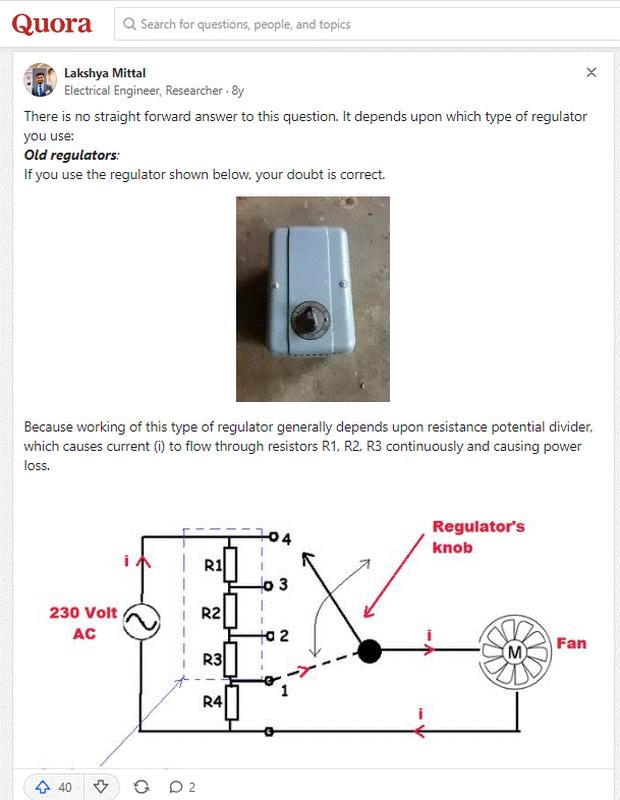
Experts on Quora explain that if the fan uses an outdated regulator, it may consume more electricity when running at a lower speed (Quora Image)
According to information from Electricity of Vietnam Group (EVN), the amount of electricity that a fan consumes and whether it is economical or not depends largely on the power rating of the device. The greater the power rating, the more electricity the device consumes, and vice versa.
When buying and using a fan, households need to keep this number in mind to choose a device with a suitable power rating that matches their living space. For example, for a room with an area of 12-15m2, a fan with a power rating of 75-90W should be used. For larger rooms or crowded spaces, fans with a power rating of over 100W or using ceiling fans with long blades should be chosen.
Using a fan with an inappropriate power rating for the space will affect the device’s operating efficiency and unintentionally affect energy savings.
Many people have the habit of always turning on the fan at the highest setting to cool down quickly and as effectively as possible, but in some cases, this action is not necessarily correct. According to many experts, especially on hot sunny days, turning on the fan at the highest setting can even make the space hotter and more uncomfortable. Therefore, the ideal fan speed is at the medium level.
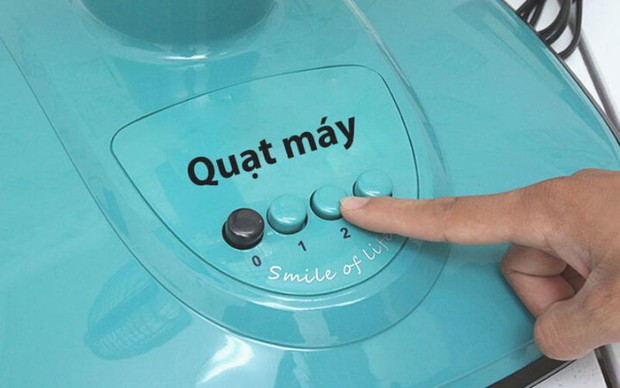
Turning on the fan at the highest setting is not necessarily an effective cooling method (Illustrative image)
Tips for using energy-efficient fans
In addition to the fan’s power rating, EVN also provides some additional tips for users to use the fan in the most energy-efficient way during the summer.
1. Limit the use of fan functions
Some modern fans are equipped with many new technologies such as ion generation, misting, fragrance creation, indicator lights… Using all of these functions at once will significantly increase the power consumption of the fan.
Therefore, consider using the additional functions only when necessary.
2. Use the timer function
Using the timer function helps you save electricity and protect the health of the family members.
When the fan blows directly at people for a long time, they may experience symptoms such as a sore throat, cough, or headache. Therefore, set the timer to let the fan rest for about 15 – 30 minutes, especially when the fan is running overnight. This rest period also prevents the fan from experiencing motor heat, ensuring the device’s lifespan.
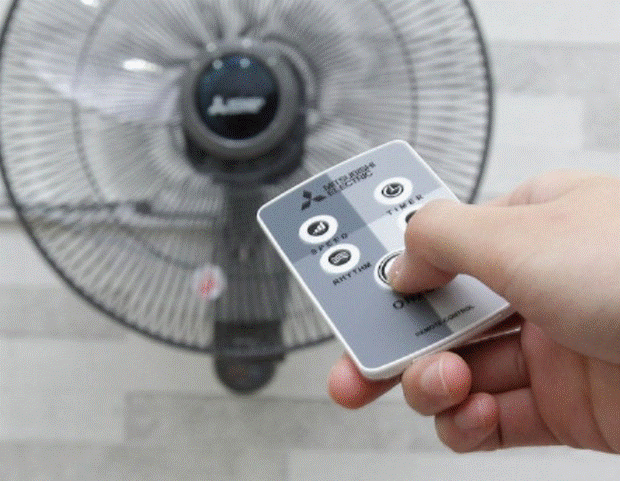
Using the timer function to turn off the fan helps save electricity, protect the health of users, and prolong the fan’s lifespan (Illustrative image)
3. Place the fan in a suitable position
Users should place the fan in well-ventilated positions, where the air can flow well, such as windows or skylights… In that case, the fan’s wind will blow hot air out, and the indoor air will circulate better, significantly reducing the feeling of stuffiness.
In the summer, especially during peak hot hours, close windows and doors in directions with high sunlight intake to limit hot air inflows.
4. Turn off the fan properly
After using the fan, most people have the habit of simply turning off the fan using the control or ordinary switch. However, this action does not completely interrupt the flow of electricity into the device.
Instead, unplug the fan’s plug from the power outlet if there is no need to use it anymore. It not only helps save electricity but also ensures safety by preventing the risk of short circuits or damage to the device.
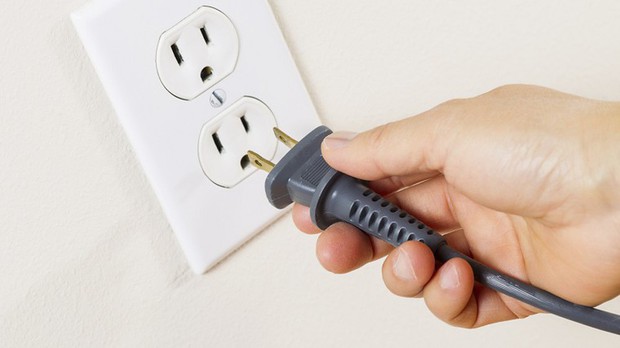
Unplug the fan when not in use instead of just turning it off with the control or switch (Illustrative image)
According to Trí Thức Trẻ
Examining the Correlation Between Fandom and Hotter Summers
Are you struggling to keep cool in the hot summer months? Although fans have been a go-to solution for keeping cool, many have noticed that their use can also inadvertently increase the ambient temperature in a room. Ði?n máy XANH is here to explain what could be causing this, and what solutions can be put in place to ensure everyone stays cool!

























